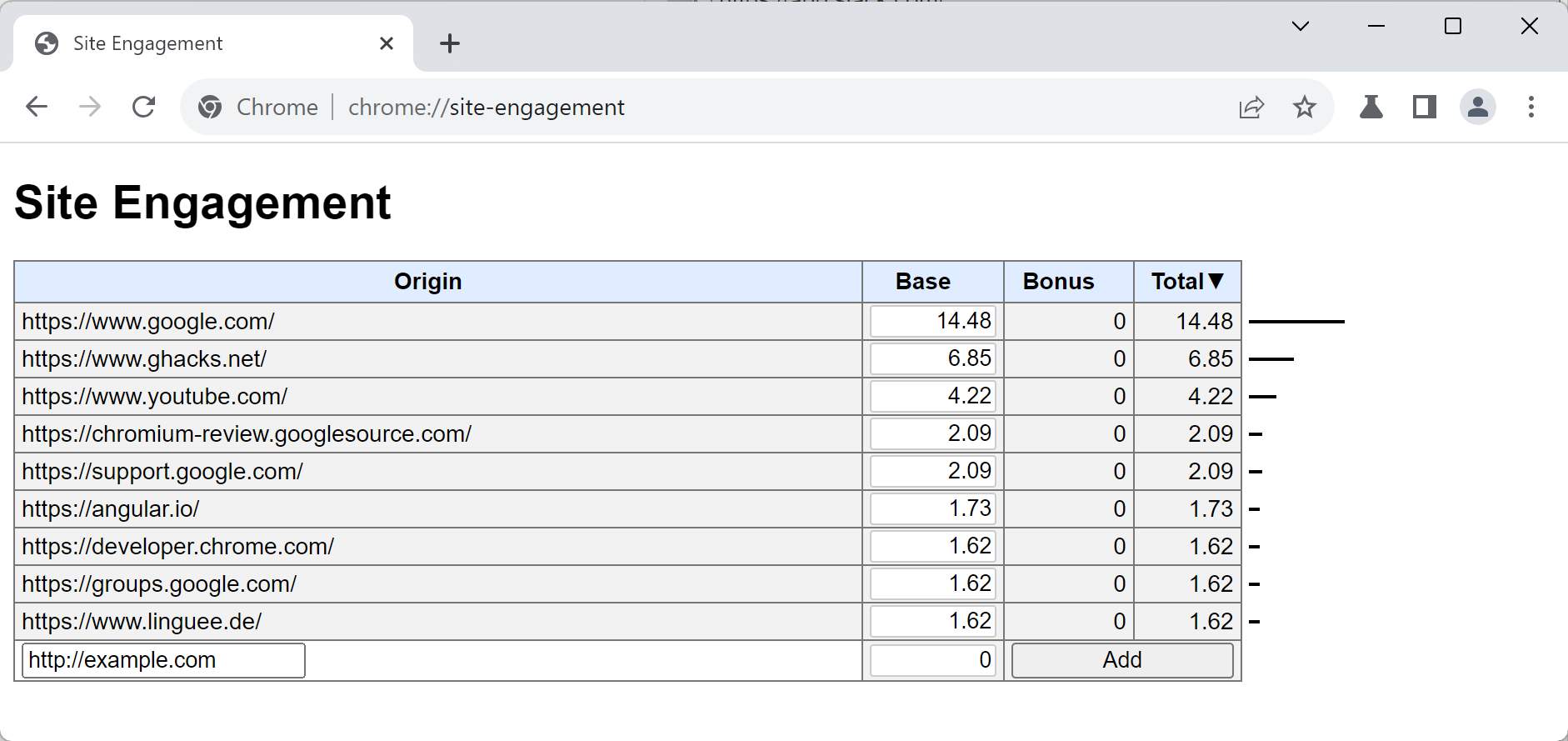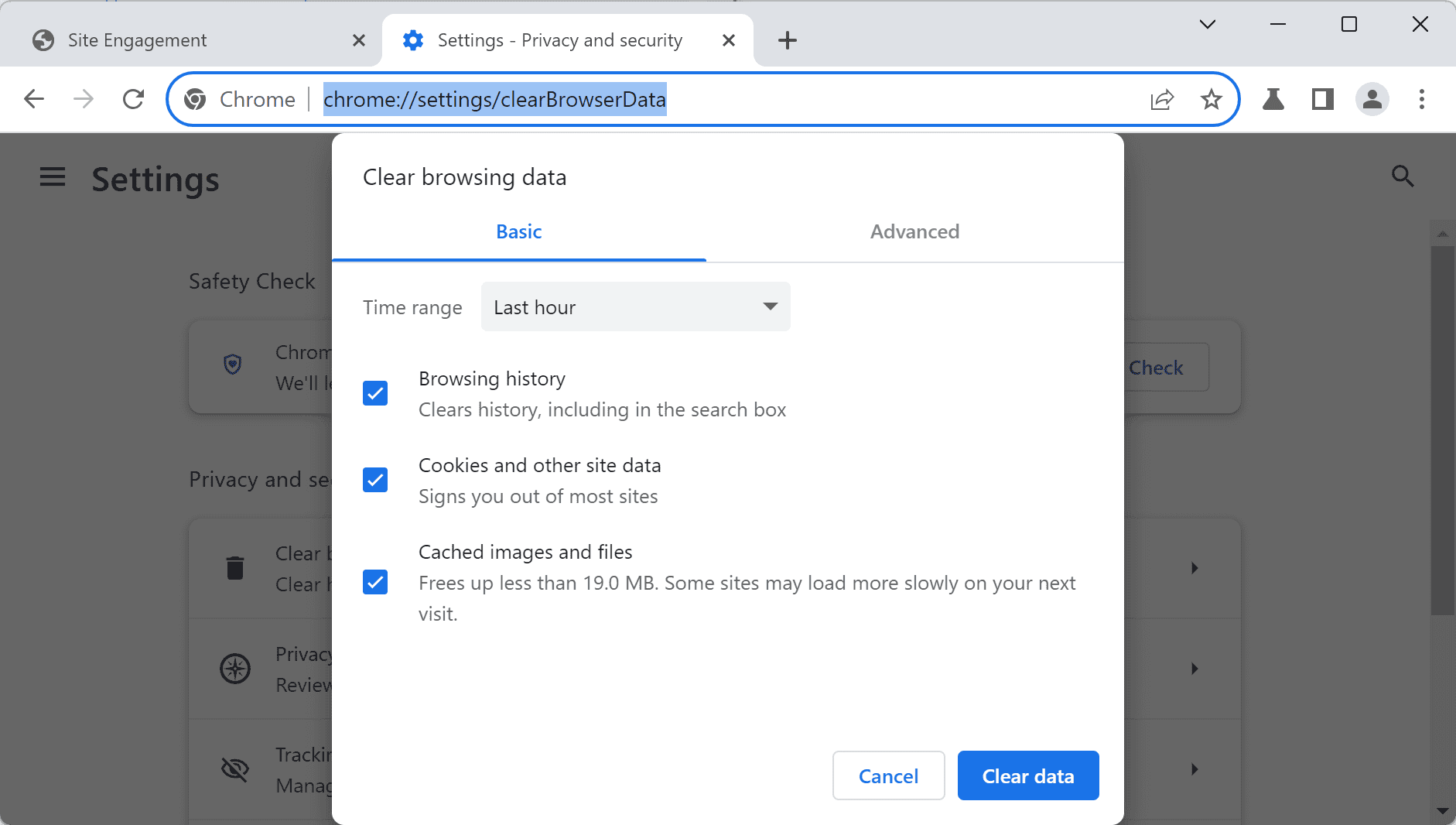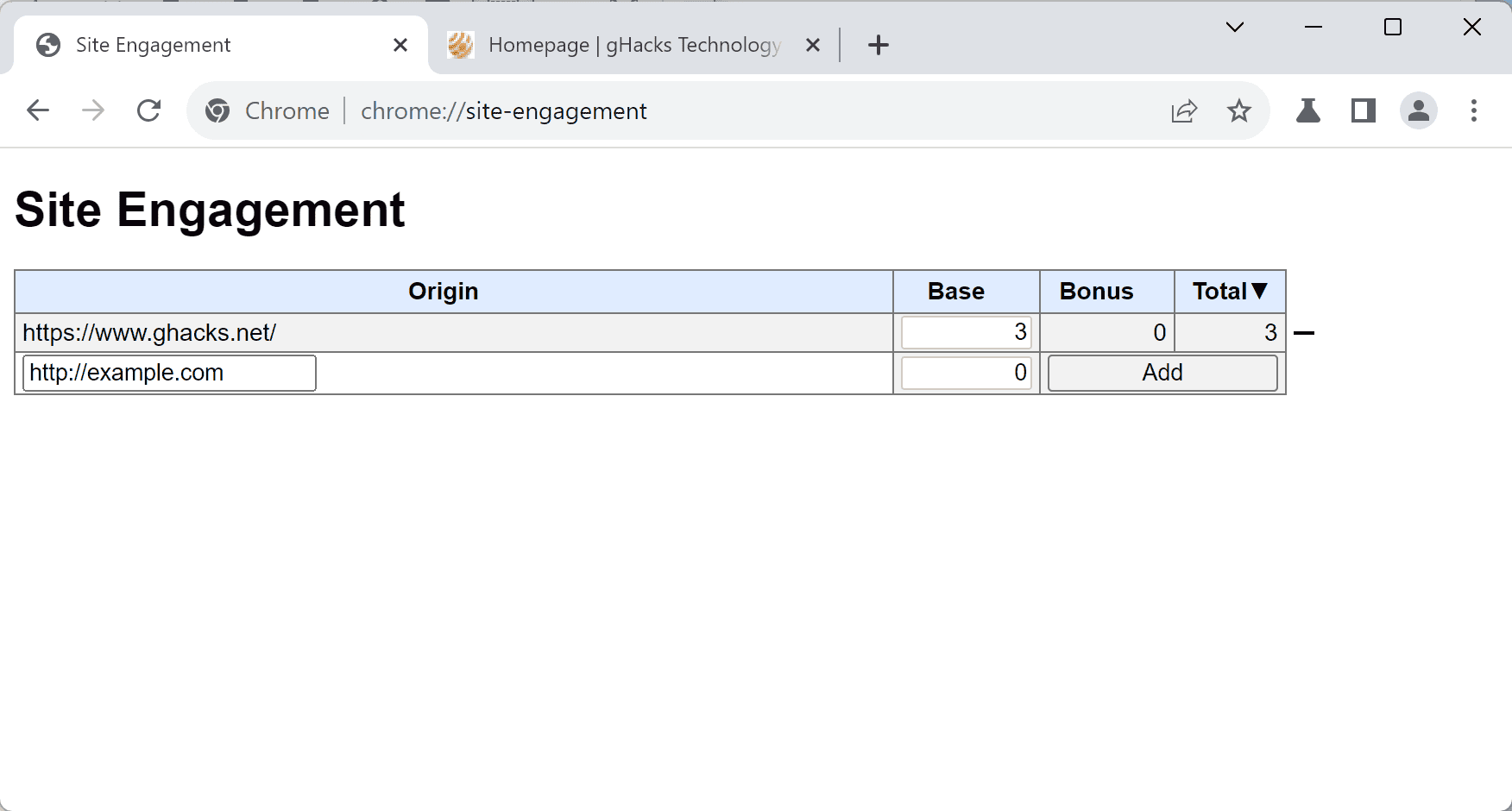Google Chrome and all other Chromium-based web browsers collect site engagement statistics. It measures how "engaged" a user is with a particular site. The score ranges from 0 to 100, with 100 stuff "super engaged" and 0 not at all.
The browser uses signals to compute the score. Signals may include clicking and scrolling, keypresses, media playback, or uncontrived navigations.
All users of Chromium-based browsers can unshut the information for their browser profile. Just load chrome://site-engagement/ in the browser's write bar to squint at the list.
Google notes that the data is not synced, which ways that it is device and profile specific. Site engagement may be used by the browser, e.g., to prioritize tab discarding or allowing/blocking unrepealable invasive features.
The information is copied whenever an Incognito session is opened in the browser, but no information is written back. This information is deleted when the browser is shut lanugo equal to the official documentation.
Your browser may leak your commonly visited websites

Site engagement information may leak to visited websites, equal to a report on the Fingerprint website, at least in Google Chrome. A demo page is misogynist for Google Chrome.
The researchers use flipside Chrome feature, Lookalike Warnings, for that. Lookalike Warnings is a security full-length that uses heuristics to determine if the user meant to visit a variegated website. A worldwide example is a typo in the domain name, e.g., gooogle.com instead of google.com.
Lookalike Warnings is designed to warn users if it believes the site may not be the intended target and requite them the endangerment to unshut the right website. Google Chrome uses a list of 4990 popular domains for that equal to Fingerprint.
To find out if a user's engagement with a site is high, websites can try to load "lookalike" domains. Martin Bajanik over at Fingerprint explains: "Any website can initiate navigation by opening a new browser window with the detection website. This whoopee requires user interaction, such as clicking a button; otherwise, the browser will woodcut the popup window. However, a single popup window can be reused to test multiple websites, as the opener can repeatedly redirect the popup window to variegated locations."
What websites do with the information is up to them. From displaying targeted telecast to malicious activities, all is possible.
Deleting site engagement
There is no option to disable site engagement in Chromium-based browsers. All collect the data and all provide wangle to the information to users.
Since there is no way to disable the collection, the next weightier thing is to delete the data regularly. The Chromium documentation reveals that engagement scores are linked to the browsing history. In other words, when users delete the browsing history, engagement scores are cleared.
Chrome users may load chrome://settings/clearBrowserData in the browser's write bar to unshut the Well-spoken Browsing Data menu.

To well-spoken the unshortened browsing history, select "all time" in the time range menu and make sure that browsing history is checked. Note that transplanting the browsing history may temporarily interfere with unrepealable browser features.
Restart the web browser and trammels the site engagement page again. It should list only a demo site and nothing else.

Closing Words
While this won't be used for widespread attacks or tracking, it is interesting nevertheless that something like this is possible. Switching to flipside Chromium-based browser, or largest a non-Chromium-based browser, resolves this particular issue.
Now You: what is your take on this privacy issue?
Thank you for stuff a Ghacks reader. The post Report: This Chrome full-length may leak commonly visited sites appeared first on gHacks Technology News.

